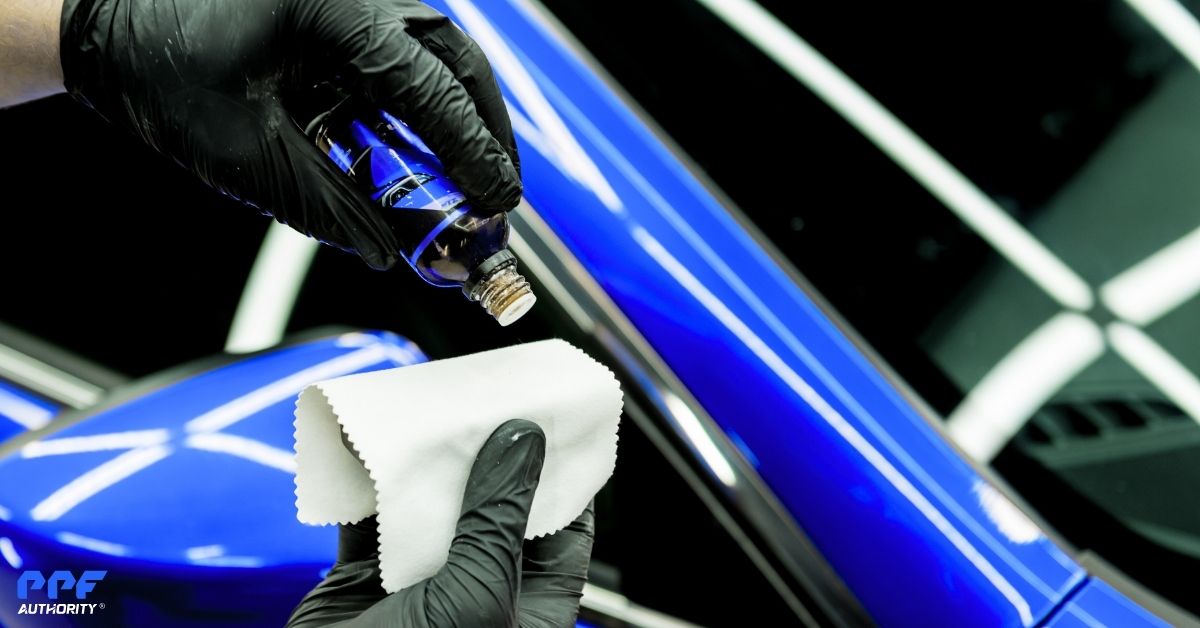Why Proper Maintenance Is Important
Windshield protection film adds a layer of protection and functionality to your windshield, but like any protective feature, it needs proper care to perform at its best. Here’s why cleaning and maintaining the film is crucial:
1. Prolongs Durability
Regular cleaning prevents the buildup of contaminants that can degrade the film over time.
2. Maintains Clarity
Dirt, grime, and residue can obstruct visibility, defeating the purpose of the film.
3. Preserves Hydrophobic Coating
Many films have a water-repellent layer that needs proper care to maintain its effectiveness.
4. Prevents Scratches
Cleaning the film with the right tools and techniques reduces the risk of surface damage.
Step-by-Step Guide to Cleaning Windshield Protection Film
1. Gather the Right Tools and Products
Using the appropriate tools is the first step in preserving your windshield protection film. Avoid harsh chemicals and abrasive materials that can damage the surface.
Recommended Tools:
- Microfiber Cloths: Soft and non-abrasive, ideal for wiping the film without causing scratches.
- pH-Neutral Glass Cleaner: A gentle cleaner designed for automotive glass or protective films.
- Spray Bottle with Water: For rinsing and spot cleaning.
- Soft-Bristle Brush: Useful for removing stubborn debris like dried bugs or bird droppings.
Avoid These Products:
- Ammonia-based cleaners (common in household glass cleaners).
- Abrasive sponges, steel wool, or paper towels.
- Harsh detergents or acidic cleaners.
2. Rinse the Windshield
Before applying any cleaner, rinse the windshield thoroughly with clean water to remove loose dirt and debris.
- Why It’s Important: Rinsing first prevents dirt particles from scratching the film during cleaning.
- Use a gentle spray or a hose with low pressure to avoid damaging the film edges.
3. Apply the Cleaner
Spray a pH-neutral glass cleaner directly onto the film or onto a microfiber cloth.
- Work in small sections to ensure even cleaning.
- Avoid over-saturating the film, as excess liquid can seep under the edges and weaken adhesion.
4. Wipe with a Microfiber Cloth
Using a clean microfiber cloth, gently wipe the surface in straight lines rather than circular motions.
- Straight Lines: Prevent swirl marks and ensure a streak-free finish.
- Light Pressure: Avoid pressing too hard, which could damage the film or scratch its surface.
5. Address Stubborn Contaminants
If bugs, bird droppings, or tree sap have adhered to the film, address them carefully:
- Soak the affected area with warm water or a diluted glass cleaner.
- Let it sit for a few minutes to loosen the residue.
- Gently remove the debris using a soft-bristle brush or microfiber cloth.
Important: Avoid scrubbing aggressively, as this can damage the film’s surface.
6. Final Rinse and Dry
After cleaning, rinse the windshield with clean water to remove any remaining cleaner or residue.
- Use a dry microfiber cloth to blot and wipe the surface, ensuring no water spots are left behind.
Tips for Maintaining Windshield Protection Film
1. Avoid High-Pressure Washing
High-pressure washers can lift the edges of the film or cause damage to the adhesive.
- If using a pressure washer, keep the nozzle at least 12 inches away and avoid spraying directly at the film’s edges.
2. Protect the Hydrophobic Coating
Many windshield protection films come with a hydrophobic layer that repels water and dirt. To maintain this coating:
- Use a ceramic or PPF-safe sealant every 3–6 months to reinforce the hydrophobic properties.
- Avoid harsh cleaners that could strip the coating.
3. Regular Cleaning Routine
- Weekly Cleaning: Prevents the buildup of dirt, grime, and other contaminants.
- Seasonal Maintenance: During winter or rainy seasons, clean the film more frequently to remove salt, mud, or water stains.
4. Avoid Harsh Environments When Possible
- Parking: Park in shaded or covered areas to reduce UV exposure, which can degrade the film over time.
- Debris: Avoid following large trucks or driving on gravel roads, as these increase the risk of chips or scratches.
5. Inspect the Film Periodically
Check for signs of wear, such as peeling edges, discoloration, or scratches.
- If damage occurs, consult a professional installer for repairs or replacement.
When to Seek Professional Help
While windshield protection film is durable, professional assistance is necessary for:
- Repairing Damage: If the film peels, bubbles, or develops significant scratches.
- Replacing the Film: Most films last 5–7 years, depending on usage and care.
Professional services ensure your windshield film continues to provide maximum protection and functionality.
Conclusion
Proper maintenance and cleaning of windshield protection film are essential to preserve its durability, clarity, and protective properties. By using the right tools, adopting gentle cleaning techniques, and following a regular maintenance routine, you can ensure your film lasts for years while keeping your windshield safe from damage.
Invest in professional installation and consult with experts for repairs or replacements to maintain the highest level of performance. With proper care, your windshield protection film will deliver exceptional protection and visibility every time you drive.
